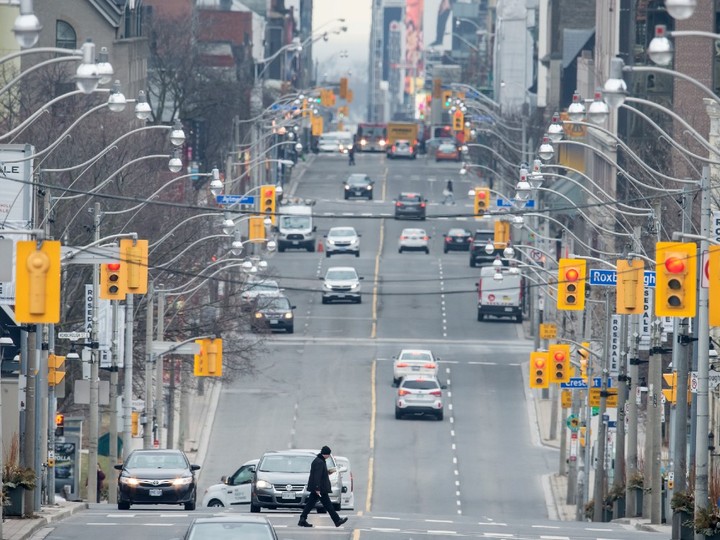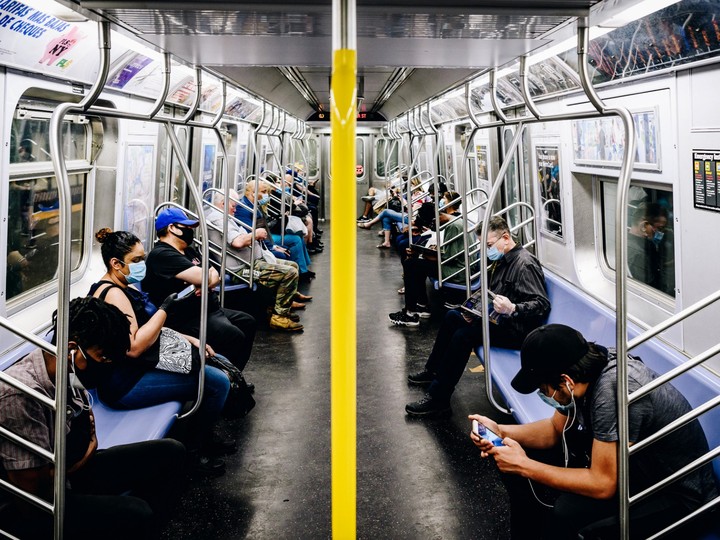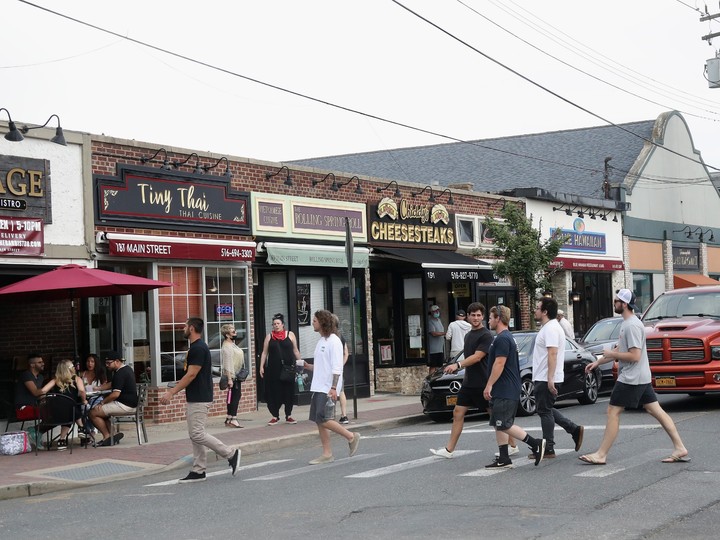suburban sprawl: is it a covid-19 super-spreader?
when it comes to health, density is not the enemy. the pandemic has important lessons for city planners across canada
we apologize, but this video has failed to load.
try refreshing your browser, or
tap here to see other videos from our team.
tap here to see other videos from our team.
the covid-19 pandemic has reignited a debate that has been smouldering amongst city planners for a century: are some kinds of neighbourhoods inherently healthier than others?when the coronavirus hammered new york this spring, it seemed obvious to everyone that the city was super-dangerous because it’s super-dense. observers blamed the city’s subways and manhattan’s forest of apartment towers. even governor andrew cuomo, cited “all that density” for the city’s virus woes. wealthy residents fled to country houses. pundits declared the age of vertical cities over.the problem with this collective gut reaction is that it isn’t based on facts. the virus did not hit manhattan the hardest. not even close. looking at a map of viral spread in new york in mid-april is like looking at a photo negative of urban density: the heat of infection glows not in the subway-tangled heart of the city, but out in more spacious, car-dependent neighbourhoods.“neighbourhoods at the core of the city had a lower rate of infection,” says salim furth, a senior research fellow at the mercator center in arlington, va. “and through the first two weeks of april, that gap between the core and the periphery actually grew rather than shrank.”when furth compared coronavirus infection data with commute modes (the way people travel to work) across zip codes, he stumbled on another surprise: the more a neighbourhood depended on cars, the higher its viral infection rate.why would car-dependent neighbourhoods show faster viral spread? nobody knows the answer yet.but furth speculates that it could be because, while nervous subway users were staying in their own neighbourhoods, people in sprawl kept on driving. they had no choice: their grocery stores and pharmacies and services were all miles away. every suburban big box or shopping plaza became a nexus of interactions between hundreds or thousands of people. furth acknowledges that correlation is not the same as causation.
advertisement

sparse vehicle and pedestrian traffic on yonge street in toronto during the covid-19 pandemic, thursday march 26, 2020.
peter thompson
/
national post
epidemiologists are still sifting through a mountain of risk factors. but viral spread is increasingly being linked to crowding inside dwellings, and occupations that put workers in close contact with many other people — conditions more associated with poverty than density. when toronto finally released a map showing viral rates across the city at the end of may, poor neighbourhoods on the fringes were much harder hit than the dense and affluent downtown core. around the world, the densest cities— places like seoul and singapore— have been among the most successful at countering the virus.that’s not proof that urban sprawl patterns actually causes viral spread. but it does raise the question: how would we design neighbourhoods if our goal was to keep people from getting sick?before covid-19, ebola was arguably the most fear-inducing pandemic in recent memory. when the virus ripped through western africa in 2014, governments attempted widespread contact tracing. but in cities it was hard to track down sick people’s contacts before the newly infected went on to infect yet more people. there were more than 11,000 deaths before ebola was suppressed in 2015.that led data scientists to search for a better way to contain pandemics. using computer simulations of viral spread, a team at the new england complex science institute found that ebola could be stopped if authorities monitored infection on a community level, then limited travel from infected areas: if people with the virus were kept from travelling between neighbourhoods, outbreaks would be shorter and enable health authorities to focus their efforts.the approach would also limit the amount of time people in any community spent in lockdown, says institute director yaneer bar-yam.“the right way to do isolation is to do it quickly,” bar-yam tells me. “we want to have the ability to isolate over short periods of time and use that short time to help people get over the disease and get back to normal.”we’ve all learned how difficult extended periods of lockdown can be. they ravage our local economies and our mental health, especially people who live alone. they can be dangerous for workers who commute on transit. so what if we could design communities that are more self-sufficient, enabling short, spot-lockdowns only when needed?

commuters wearing protective masks ride the l subway line during rush hour in the williamsburg neighbourhood in the brooklyn borough of new york, u.s., on monday, june 8, 2020.
nina westervelt/bloomberg
advertisement
it turns out we’ve already got thousands of these places—built when neighbourhoods were designed around streetcars, rather than cars. places like vancouver’s commercial drive, or edmonton’s strathcona, or toronto’s danforth, allow residents to meet most of their daily needs within a short walk. it’s easier to stay close to home when you can walk to school, to the grocery store, the community centre, your church, your masjid or skate park.bar-yam isn’t crazy about the idea of designing cities to facilitate lockdowns. after all, if community isolation works, then local lockdowns could be limited to a tolerable two weeks. and pandemic-proofing may not actually be the most important consideration for neighbourhood design, if the goal is to keep people healthy in the long run.as i describe in my book, happy city, people in car-dependent communities die three to five years sooner than those who live in walkable, connected neighbourhoods. research in metro vancouver has shown that health care costs associated with heart disease are 50 per cent higher for people living in car-dependent places. poor families also have less money for basics like healthy food when they are forced to drive everywhere.all of this is why public health officials have been begging cities to adopt more walkable community designs. but pandemic preparedness, community design and public health do intersect: people who live in walkable communities with plentiful local shops, services and amenities also report being more likely to know and trust their neighbours — relationships that may actually keep them alive in times of crisis.consider the japanese tsunami in 2011: when a six story-high wave smashed into the country’s northeastern coast, local relationships were a matter of life and death. in closely connected communities, residents sought out the elderly and the vulnerable and carried them to safety before the wave hit, sometimes on their backs. high-trust areas had a much higher survival rate than disconnected places. then, in the months following the disaster, their residents were the quickest to return and the most successful at restarting their local economies.

restaurants on long island were permitted to open for outside service today as the region entered phase ii of new york state’s plan to return to normalcy after closings were mandated due to the coronavirus pandemic.
bruce bennett/getty images
advertisement
these connections are even more important for people at the low end of the income scale, who are also more likely to be black, indigenous or immigrants. when a blistering heat wave struck chicago in 1995, nearly 700 people died in the course of three days. but sociologist eric klinenberg found that, among poorer, racialized neighbourhoods, the death rate was 90 per cent lower where there was social infrastructure such as local shops, services and community centres.poor children who grow up in mixed-use, walkable places are more likely to climb up the socio-economic ladder too. it’s partly because they can reach opportunities without a car. but it’s also because people in walkable places tend to feel a deeper sense of belonging, an invisible but powerful emotional tonic which actually predicts changes in social class over time.these psychological effects are just beginning to be understood by city planners. but the health gap for poor, racialized canadians, who suffer disproportionately from a host of life-shortening conditions beyond covid-19, is well documented. neighbourhood design can help, and in an age when inequity is triggering protest in cities across north america, now is the time to act.the pandemic has thrown all of us into a season of shock. but it has also created an unprecedented opportunity for change. in response to the crisis, neighbourhood streets have been slowed down to give people room to move and breathe. parking lanes in business districts are being converted into patios for social distance dining and shopping. homeless people have been offered rooms in hotels.these are healthy moves. now we need to go further, to make all of our neighbourhoods more complete machines for a healthier future.we need to make this spring’s temporary walk and bike zones permanent, to ensure that it’s safe to travel in ways that are cheap and healthy.we need to remove the ban on commercial activity in residential neighbourhoods so corner stores and other entrepreneurs can operate near where people live (and increasingly work).we need to end the ban on multi-family housing in most canadian neighbourhoods, so people across the income spectrum can live near daily destinations and crush their brutal commutes.we need to cancel the rules, such as minimum parking requirements, that drive up the cost of new buildings in walkable places.we need to ensure that federal or provincial stimulus funding is directed to affordable housing in complete neighbourhoods, rather than “shovel-ready” automobile infrastructure that subsidizes life-shortening sprawlwe need to ensure that black, indigenous and other marginalized canadians are helping direct changes in their own neighbourhoods, since they have been hurt the most by unhealthy design.in short, we need to do everything we can to let our neighbourhoods flourish as complete communities for everyone.this may not stop the next pandemic. but the evidence is clear. complete, complex and inclusive neighbourhoods will help us all stay healthier and stronger, not just in times of crisis, but every day.charles montgomery is principal of the urban wellbeing consultancy, happy city, and a member of the un sustainable solutions network’s sub-council for happy cities. @thehappycity
our website is the place for the latest breaking news, exclusive scoops, longreads and provocative commentary. please bookmark nationalpost.com and sign up for our newsletters here.
 7 minute read
7 minute read
